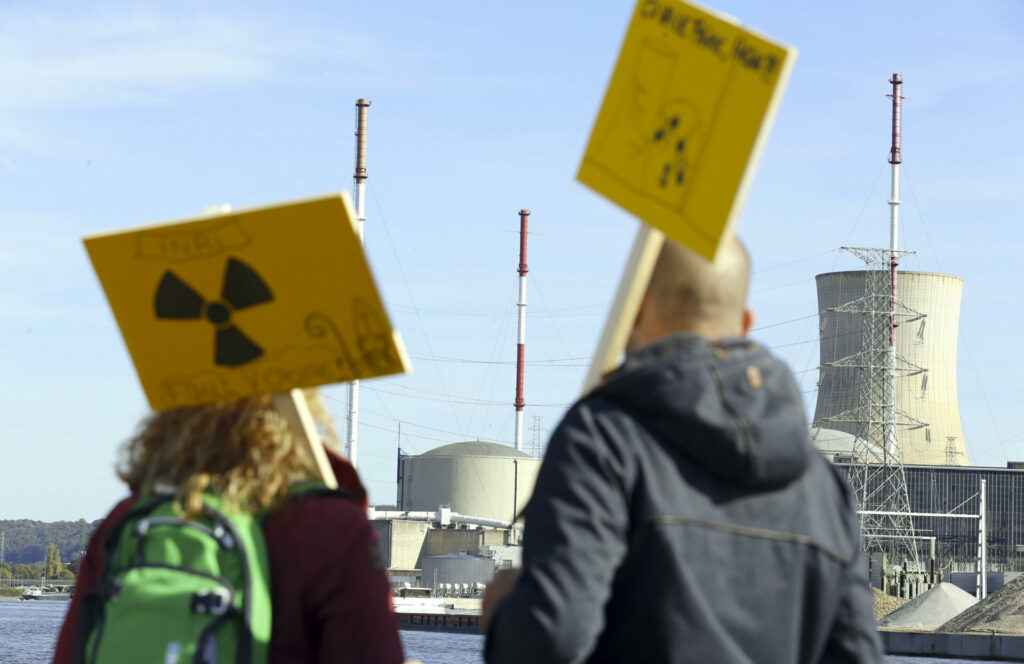BRUSSELS BEHIND THE SCENES
Weekly analysis with Sam Morgan
Nuclear power is a topic that provokes confusion, headaches and, too often, verbal abuse when it comes up. This week, atom-smashing became even more complex.
Europe’s relationship with nuclear energy would need an entire book to explain rather than a weekly column. Unfortunately for those of you that want to know more, the issue got even more convoluted this week.
BRUSSELS BEHIND THE SCENES includes weekly analysis not found anywhere else, as Sam Morgan helps you make sense of what is happening in Brussels. If you want to receive Brussels Behind the Scenes straight to your inbox every week, subscribe to the newsletter here.
Nuclear power stokes a lot of emotions, both among those qualified to talk about it and definitely among those that don’t know much about energy policy. The latter are often its loudest champions.
In Europe it is extra complicated because some countries are established atom-smashers, others are fervently opposed, many dream of finally building reactors and a handful have been there, done that and would not recommend it.
The European Union is supposed to take everyone’s views into account and craft policies that do not prevent countries from meeting targets using the technology of their choice. That is where nuclear can often be difficult to fit into new rules and regulations.
This week, that problem was on full display as the European Commission unveiled a batch of new strategies meant to help the bloc crank up its green economy to eleven and reduce further its energy dependence on outside influences.
First up was the EU’s long-awaited reform of electricity market rules. Political pressure reached boiling point last year as sky-high gas prices pushed energy bills to record levels and governments shelled out huge chunks of their GDPs to combat them.
The Commission reacted and said it would review the market rules in an attempt to decouple gas prices from cheaper options like renewables and nuclear. An honourable target but a very complicated one to achieve.
This week’s review is not the complete overhaul some countries wanted, more a “targeted” fine-tuning that hopes to get lots more green power into the energy mix, which will theoretically force a lot of the expensive gas out of the system.
France, canny as ever, also managed to get a big perk for nuclear power, which makes up about 70% of its electricity production.
Under the Commission plan, all low-carbon generation that receives public money will have to be managed by a contract for difference (CfD), a financial instrument that sets a price for power, compensating producers or consumers if the wholesale price goes below or above certain limits.
CfDs will apply to new state-backed projects but, and this is crucial for France’s plans to maintain and expand its nuclear fleet, they can also apply to existing power generation if the aim is to refurbish or extend the lifetimes of power plants.
Emmanuel Macron may have had a terrible week because of his controversial pension reform but this was a big victory for his energy and industrial plans. It would mean that French public money can flow into the industry, bypassing strict state aid laws that could otherwise derail the effort.
The reform now has to run the gauntlet of MEP and national government approval, meaning anti-nuclear lawmakers may yet seek to strip those tenets out of the final agreement. But Paris will fight tooth and nail to preserve it.
That is also the case for the EU’s new Net-Zero Industry Act, also published this week, which will aim to boost the domestic production of energy transition technologies like wind turbines, solar power panels and electricity grid components.
Nuclear power was included in a draft list of technologies that will receive priority status under the act but it was missing from the final text, instead replaced by small modular nuclear reactor tech.
SMRs are a nascent technology and although countries like Poland and the United Kingdom have announced plans to use them to fuel industrial centres and other power-hungry consumers, there are few tangible examples.
The net-zero plan also needs to secure Parliament and Council approval and France has already insisted that it will try to shoe-horn full-fat nuclear back onto that priority list. It seems a tall order but do not count the French and their allies out.
Opposition will be fierce, as already proven by Austria’s willingness to take the Commission to court over its inclusion of nuclear in the EU’s sustainable investments rulebook, the taxonomy. The no-to-nuclear group also took issue with another set of rules this week.
According to Austria, Denmark, Germany, Ireland, Luxembourg, Portugal and Spain the EU must not count low-carbon energy generation as renewable, as talks on updating a crucial directive still drag on.
In a letter to Commission energy chiefs, the seven countries reiterate their long-standing opposition to including low-carbon hydrogen and other fuels produced using non-renewable energy under the 2030 target.
They insist that if the law were to incentivise that it would slow down the deployment of renewable energy elsewhere as investments would be soaked up by, for example, nuclear. France and a small group of other EU members insist the very opposite.
Renewable energy directive negotiations are due to reach a head this month but there is no guarantee a deal will be struck. Germany upset the apple cart by controversially blocking new car standards so France may choose to follow its example and be belligerent.
Nuclear is divisive and that is not going to change anytime soon.
BRUSSELS BEHIND THE SCENES includes weekly analysis not found anywhere else, as Sam Morgan helps you make sense of what is happening in Brussels. If you want to receive Brussels Behind the Scenes straight to your inbox every week, subscribe to the newsletter here.

